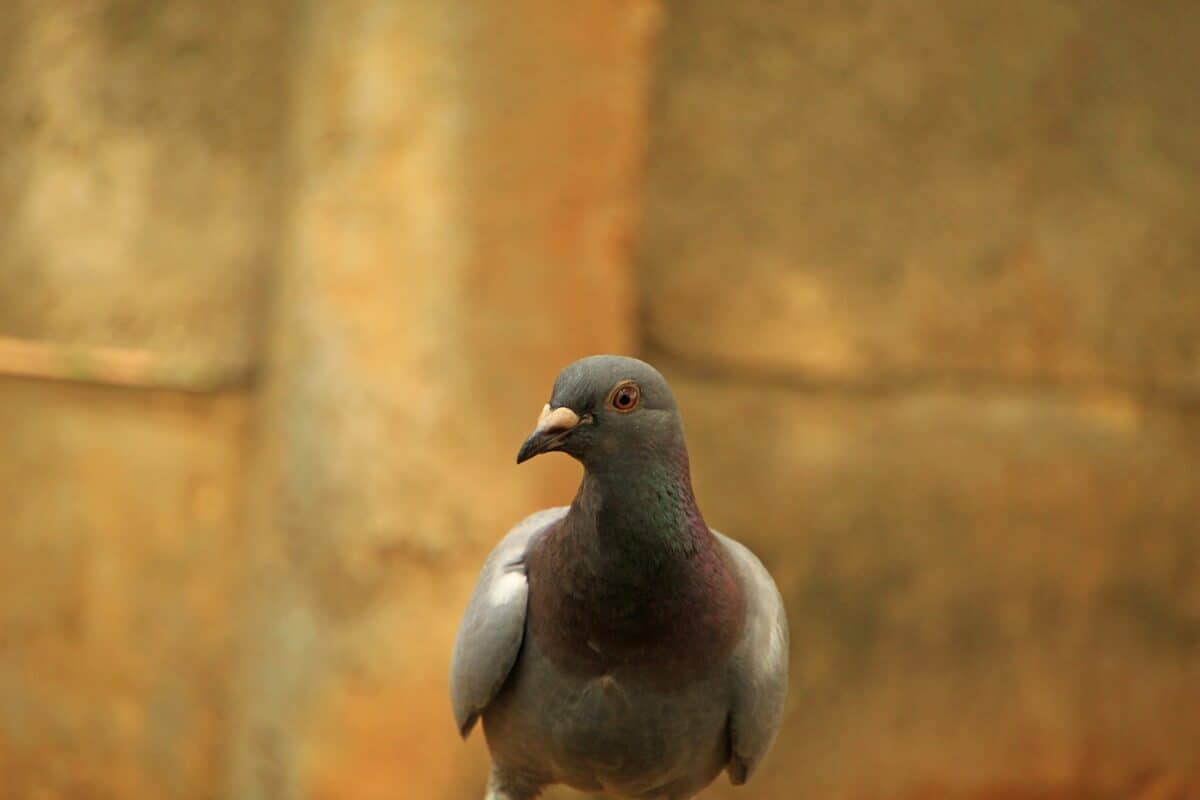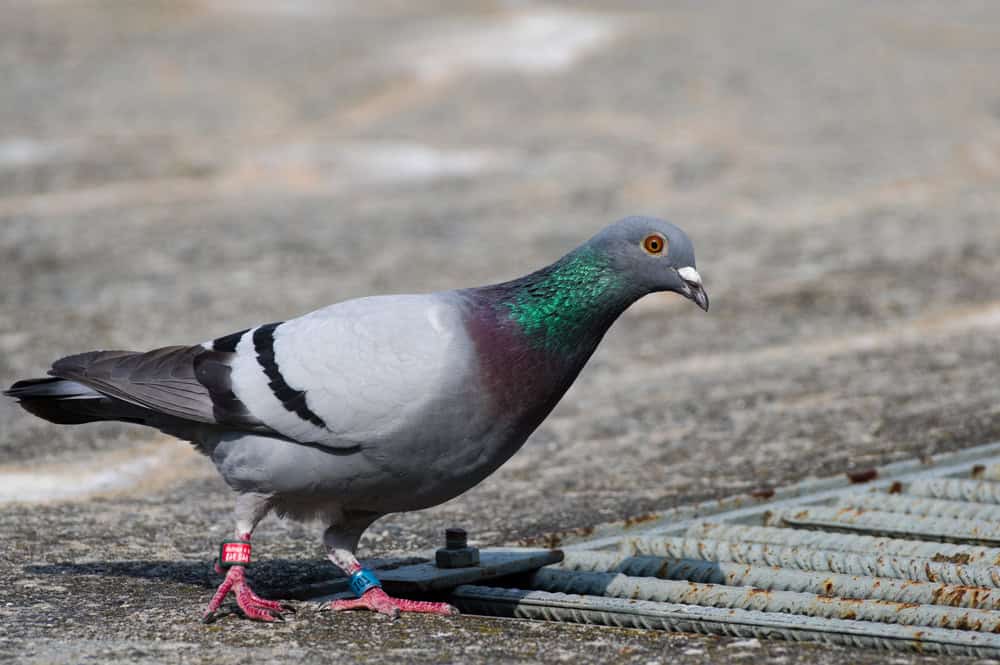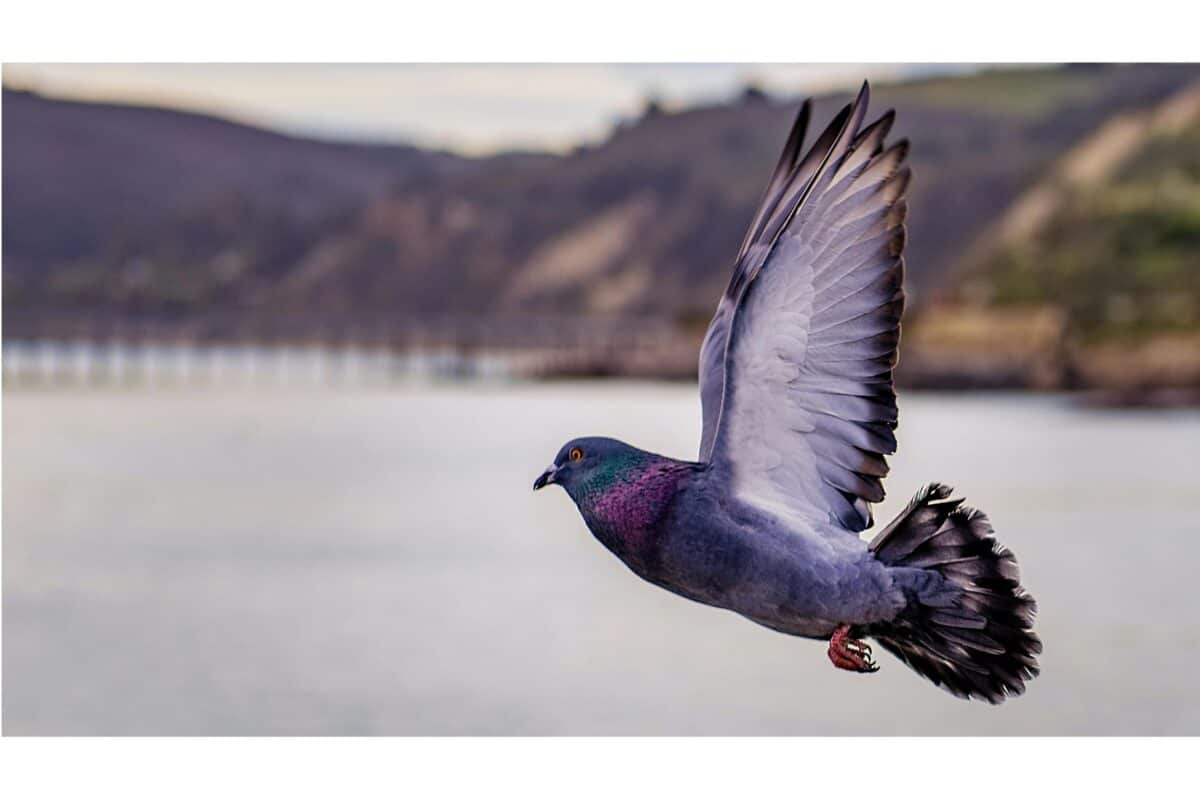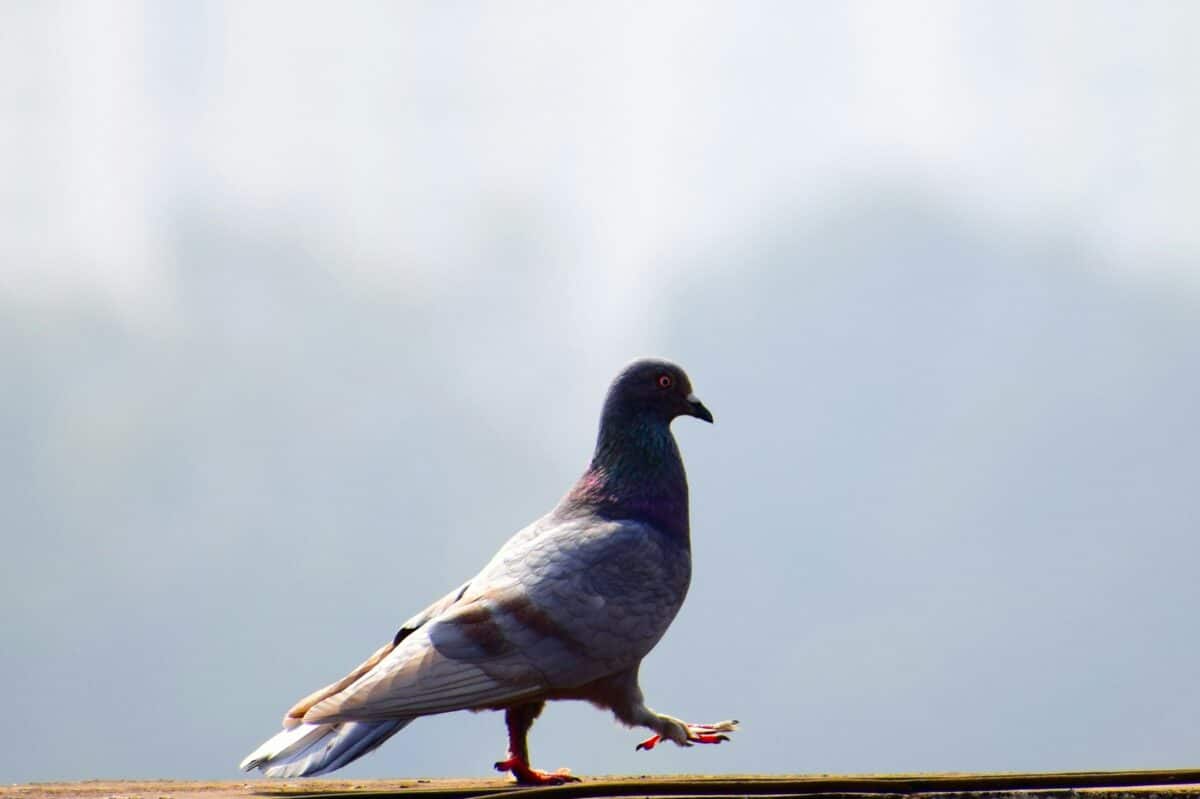In the fog of World War I, amidst the cacophony of artillery fire and the chaos of battle, an unlikely hero emerged. This hero didn’t carry a rifle or wear a uniform in the traditional sense. Instead, it was a carrier pigeon named Cher Ami, whose extraordinary courage and determination saved the lives of 194 American soldiers trapped behind enemy lines in October 1918. As a member of the U.S. Army Signal Corps’ pigeon service, Cher Ami became one of the most celebrated animal heroes in military history, demonstrating that bravery comes in all sizes and forms.
Cher Ami, whose name means “dear friend” in French, was a Black Check Cock homing pigeon, one of hundreds used by the Allied forces to deliver critical messages when other forms of communication failed. Little did the military handlers know that this particular bird would perform one of the most important missions of the war, flying through enemy fire to deliver a message that would prevent American artillery from continuing to shell their own troops who had become isolated in a dangerous position.
The Lost Battalion Crisis

The story of Cher Ami’s heroism is inextricably linked to what became known as “The Lost Battalion.” In early October 1918, during the Meuse-Argonne Offensive, Major Charles Whittlesey led approximately 554 men of the 77th Infantry Division into the dense Argonne Forest in northeastern France. Their mission was to advance and hold their position regardless of whether the allied troops on their flanks were able to move forward. What followed was a military disaster that would test the limits of human—and avian—endurance.
The battalion pushed forward but soon found themselves cut off, surrounded by German forces on three sides and trapped in a small depression in the Charlevaux ravine. To make matters worse, American artillery, unaware of the battalion’s position, began shelling them. Over the course of five days, the trapped soldiers endured constant enemy fire, diminishing supplies, and now, devastating friendly fire. With no working field telephones and runners unable to get through enemy lines, pigeons became their only hope for communication with headquarters.
The Critical Mission

By October 4, 1918, the situation for the Lost Battalion had become desperate. Of the original 554 men, only 194 remained unwounded. They had already sent two pigeons with messages requesting assistance and reporting their position, but both birds had been shot down by German soldiers who were well aware of the importance of the feathered messengers. Major Whittlesey had one pigeon left—Cher Ami—and one last chance to save his remaining men from the friendly artillery fire that was decimating their ranks.
The message attached to Cher Ami’s leg was succinct and urgent: “We are along the road parallel to 276.4. Our own artillery is dropping a barrage directly on us. For heaven’s sake, stop it.” With this vital message secured in a small canister attached to the bird’s leg, Cher Ami was released into the sky, the hopes of 194 men rising with it.
Flying Through Hell

As soon as Cher Ami took flight, German soldiers spotted the bird and opened fire. The sky erupted with bullets as the small pigeon became the target of an entire enemy battalion. The men of the Lost Battalion watched in horror as Cher Ami was hit and began to fall, their hopes plummeting with the bird. But in an extraordinary display of determination, Cher Ami recovered and continued to fly, rising above the bullets and heading toward division headquarters 25 miles away.
The journey was nothing short of miraculous. Cher Ami flew through a curtain of enemy fire, sustaining severe injuries along the way. The bird was shot through the breast, blinded in one eye, and had a leg nearly severed, with the crucial message canister dangling by a tendon. Despite these devastating wounds, Cher Ami continued to fly, driven by an instinct and training that transcended pain and exhaustion. The pigeon arrived at headquarters in just 25 minutes, delivering the message that would save the lives of the remaining soldiers.
Immediate Impact

Upon receiving Cher Ami’s message, American commanders immediately halted the friendly artillery fire that had been raining down on the Lost Battalion. This cessation of friendly fire gave the trapped soldiers a fighting chance at survival. While they remained surrounded by German forces, they were no longer being bombarded by their own side, which significantly improved their situation and morale.
The headquarters also quickly organized a relief operation. Several attempts were made to break through the German lines and reach the isolated battalion. Finally, on October 8, 1918, after enduring seven days of isolation, starvation, and constant enemy fire, the survivors of the Lost Battalion were rescued. Of the original 554 men who had entered the Argonne Forest, only 194 walked out unscathed—the exact number of men mentioned in the history books as having been saved by Cher Ami’s valiant flight.
Medical Care for a Feathered Hero

When Cher Ami arrived at headquarters with the critical message, the bird was in terrible condition. Army medics worked feverishly to save the valiant pigeon’s life, providing care that would typically be reserved for human soldiers. They were unable to save the nearly-severed leg, but they fashioned a small wooden prosthetic to replace it—making Cher Ami possibly the first bird in history to receive such a device.
The medics also treated the pigeon’s other wounds, including the chest injury and damaged eye. Their efforts paid off, and Cher Ami survived the ordeal. The level of care provided to the injured pigeon demonstrates the immense value placed on these messenger birds during the war, as well as the genuine affection and respect the soldiers had for these brave creatures that served alongside them in the trenches of Europe.
Carrier Pigeons in World War I

Cher Ami was one of an estimated 600 pigeons used by the American forces in France during World War I, and the French and British armies employed thousands more. In an era before reliable radio communication on the battlefield, pigeons played a crucial role in military operations. These birds could travel at speeds of up to 60 miles per hour and were capable of finding their way home from distances of several hundred miles, making them invaluable for battlefield communications.
The U.S. Army Signal Corps established a pigeon service specifically for the war, training birds to return to mobile lofts near the front lines. Soldiers carried the pigeons in wicker baskets to the front, and when needed, would attach a message to a small canister on the bird’s leg before releasing it. The pigeons would then fly back to their lofts, where handlers would retrieve the messages and forward them to headquarters. During the war, these remarkable birds delivered thousands of messages with a success rate of approximately 98 percent, often flying through artillery barrages and poison gas to complete their missions.
Recognition and Honors

Cher Ami’s extraordinary service did not go unrecognized. Upon returning to the United States, the heroic pigeon was awarded the French Croix de Guerre with Palm, one of France’s highest military honors, for meritorious service and heroism in combat. The medal ceremony included all the pomp and circumstance that would be afforded to a human recipient, reflecting the genuine respect for Cher Ami’s contribution to the war effort.
General John J. Pershing, commander of the American Expeditionary Forces, personally oversaw Cher Ami’s safe return to the United States. The bird became a celebrity, featured in newspapers and honored at various events. The story of the brave pigeon that saved 194 men became legend in military circles and beyond, inspiring books, articles, and even films that celebrated this remarkable feat of animal courage and the bond between soldiers and their animal companions in wartime.
Life After War

Despite receiving excellent care, Cher Ami never fully recovered from the severe injuries sustained during that fateful flight. The pigeon lived for only about a year after returning to the United States, passing away on June 13, 1919, likely due to complications from the wounds. Though Cher Ami’s life was short, the impact of this brave bird’s actions would be remembered for generations.
After death, Cher Ami’s body was carefully preserved through taxidermy and presented to the Smithsonian Institution. The decision to preserve and display the pigeon demonstrates the historical significance attached to this animal hero. It ensured that future generations would be able to learn about and appreciate the contributions of carrier pigeons to the war effort, particularly Cher Ami’s remarkable act of bravery that saved so many lives.
Legacy in the Smithsonian

Today, visitors to the Smithsonian’s National Museum of American History in Washington, D.C. can still see Cher Ami, preserved and displayed as part of the museum’s collection of military artifacts. The small taxidermied pigeon, with its wooden prosthetic leg still attached, stands as a tangible connection to a remarkable wartime story and a testament to the important role animals have played in human conflicts throughout history.
The display includes information about Cher Ami’s heroic flight and the context of the Lost Battalion, educating visitors about this often-overlooked aspect of World War I history. The preservation of Cher Ami serves not only as a memorial to one brave bird but also represents the thousands of pigeons that served in the war, many of which gave their lives carrying messages that saved countless human lives.
Cultural Impact

The story of Cher Ami has transcended military history to become part of American cultural heritage. The pigeon’s brave flight has been depicted in books, films, and television shows, introducing new generations to this remarkable tale of animal heroism. Perhaps most notably, the 2001 film “The Lost Battalion” portrays the ordeal of Major Whittlesey’s men and includes Cher Ami’s crucial role in their survival.
Beyond entertainment, Cher Ami’s story has been used in educational contexts to teach children about World War I, animal intelligence, and the concept of bravery. The tale of a small bird persevering against overwhelming odds to save human lives resonates across age groups and provides an accessible entry point into discussions about history, sacrifice, and the human-animal bond. Statues and memorials dedicated to war pigeons, including Cher Ami, can be found in various locations, ensuring that these avian heroes are not forgotten.
The Truth About Cher Ami’s Identity

For decades after the war, Cher Ami was described as a female pigeon in many historical accounts. However, when the Smithsonian conducted a more thorough examination of the preserved specimen in the 1970s, they discovered that Cher Ami was actually male. This revelation required a correction to numerous historical texts and demonstrates how even well-established historical narratives can contain inaccuracies that need to be addressed through ongoing research and examination.
Another interesting aspect of Cher Ami’s identity is the bird’s origin. While serving with the American forces, Cher Ami was actually hatched and trained in the United Kingdom as part of the British Army’s carrier pigeon service before being transferred to the American Expeditionary Forces. This international background adds another layer to the story, highlighting the collaborative nature of the Allied war effort and the shared resources that contributed to the eventual victory.
The Enduring Message of Courage

The story of Cher Ami continues to resonate more than a century after those dramatic events in the Argonne Forest. It reminds us that heroism knows no boundaries of species or size, and that courage can manifest in the most unexpected forms. The tale of a small pigeon battling through enemy fire, grievously wounded yet determined to complete its mission, speaks to universal themes of sacrifice, duty, and the will to persevere against overwhelming odds.
For the 194 soldiers whose lives were saved by that final message, Cher Ami represented their last hope in a desperate situation. The fact that this hope came in the form of a bird weighing less than a pound makes the story all the more remarkable. In commemorating Cher Ami’s flight, we honor not just one brave pigeon but also acknowledge the countless animals that have served alongside humans in times of conflict, often at great cost to themselves. The legacy of Cher Ami stands as a powerful reminder that sometimes the smallest beings can make the most significant difference, and that true heroism transcends all boundaries.
- The Role of Extreme Weather in Shaping Animal Evolution - August 21, 2025
- How Far Can a Snake Strike? Understanding Strike Range - August 21, 2025
- 11 Ways to Tell If a Rock is a Meteorite (Or Just a Regular Stone) - August 21, 2025

